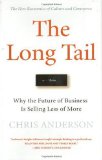PR Spam: Ten Points for Thought
Last week, Chris Anderson started the PR industry talking with his post about blocking over 300 PR folks. Chris subsequently posted a follow up regarding the aftermath, where I posted a response in the comments. I debated whether it was worth expanding on those initial comments and I think it is.
I believe that Chris’ email will be a catalyst in our industry to sit up and recognize what needs to be addressed. The comments seem to fall into two camps: Why would Chris post all the emails, which may harm people’s careers OR Thank you Chris for finally unveiling the evils of the PR spinmeisters/flacks.
Let’s be honest with ourselves. Chris isn’t talking about the few folks who do their due diligence and provide a good name for the profession. He’s referring to some of the tactics that are used in order to achieve the results that we’re hired to do. And please don’t tell me you weren’t guilty of doing this when you first entered PR. Heck, I sometimes make these mistakes when I feel pressured to show momentum on my weekly updates.
So what are the underlying aspects of our industry that contributes to the “spam”? Here are PR Spam’s 10 Points for Thought:
- Junior
peoplestaff put the media lists together and senior people don’t review it. - Clients like to have big name editors/magazines on their media list, even when it’s not appropriate. Makes them feel better, that’s all.
- Hoping that if you send out enough emails, one may actually get read and “resonate” with the reporter.
- Agency doesn’t have enough seasoned professionals on staff to do the work, so newbies pitch without supervision.
- Too many accounts + not enough people to staff them = shoddy work
- Relying too much on media databases. They’re fallible – wrong beats, wrong emails, wrong phone numbers. Heck I’ve found info on people who left 6 months ago. Augment the research by going to the website and reading the print pub (if there is one). Even consider calling the switchboard to see if the reporter is still there.
- Expectations weren’t set based on the news/company being pitched, so someone has to pitch the reporter as a result.
- Need to show momentum on your weekly updates. Pitch someone, anyone. Just put it on the update.
- PR 101 – train on the fundamentals and document it. Raise of hands, how many agencies actually have documented the process for media pitching, blog relations, speaking opportunities, etc…Bueller?
- Budgets don’t represent the amount of work it takes to research and write intelligent pitches. Is this a reflection of budgets being too low or that the way we are doing the work needs to be reconsidered?
In the end, there is a lot about our industry that has contributed to us being called “flacks.” Until we, as an industry, honestly acknowledge the bad practices and start putting together our own code of best practices, this will continue to happen at small and large agencies and in-house.
This underscores the need to slow down, breathe and take a step back. High-tech PR is fast-paced. Providing good counsel and developing long-term relationships doesn’t.
I would love to hear from an agency or other professionals who have addressed this.
Technorati Tags: Chris Anderson Public Relations PR PR industry PR Spam
4 Comments
Leave a comment
Additional comments powered byBackType
About
Favorite Service
Recent Comments
- on Going Virtual Isn’t Necessarily the Answer to Replacing Your Physical Events
- on Going Virtual Isn’t Necessarily the Answer to Replacing Your Physical Events
- on Going Virtual Isn’t Necessarily the Answer to Replacing Your Physical Events
- on Going Virtual Isn’t Necessarily the Answer to Replacing Your Physical Events
- on Going Virtual Isn’t Necessarily the Answer to Replacing Your Physical Events
Ads by Google
Favorite Books
Marketing Blogs
PR Blogs
- KD Paine's Measurement Blog
- Micro Persuasion
Virtual Events & Meetings Blogs
- Cisco Virtual Environments
- It's All Virtual
- The Webinar Blog
- Virtual Edge Institute

 Follow
Follow Cece Salomon-Lee is director of product marketing for Lanyon Solutions, Inc. and author of PR Meets Marketing, which explores the intersection of public relations, marketing, and social media.
Cece Salomon-Lee is director of product marketing for Lanyon Solutions, Inc. and author of PR Meets Marketing, which explores the intersection of public relations, marketing, and social media. 



I think you’ve identified some of the main reasons why PR people build large media list that often include more than a few inappropriate contacts. Particularly, I think people rely far too much on media databases. I actually just wrote a post about this: http://inmedialog.com/index.php/archives/theres-no-shortcut-for-building-a-great-media-list/
dsd
Thanks Eric – yes – it does come down to trust. And no matter how long you’ve been in PR, I’m constantly working to earn and keep that trust.
Cece
Great post,
Do you think a lot of PR comes down to trust? Editors need to trust that the reason you are contacting them is because what you are introducing them to will be of interest to them. They want to hear from you but not if you have nothing to add to the conversation that they have with their users. Trust then extends to those that are asking PR professionals to do their job – a shotgun blast is so wrong these days that if hurts to even see it. If you are a purple cow – tell those that want to hear about purple cows so that they in turn have something useful to say. Does your CEO understand that hitting the right person – honestly and with sincerity – is where online promotion is going. Techcrunch won’t tell you about the weather – the weather channel does that.
Great post Cece – fresh, honest and sincere. My trust level in you just went up a notch!
Cheers – Eric
PR Spam: Ten Points for Thought « PR Meets Marketing
This posting provides ten point for consideration to consider in response to Chris Anderson’s post on PR spam.